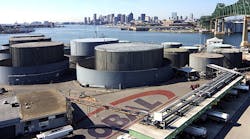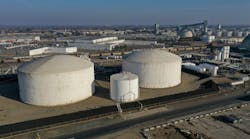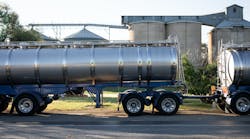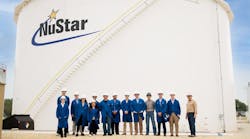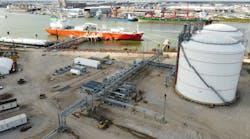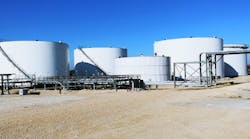The U.S. Environmental Protection Agency (EPA) recently expanded the availability of a proven, modern inspection method for finding and correcting air pollution leaks at large liquid storage tanks.
EPA’s final action offers regulatory flexibility to more than 3,500 petroleum, chemical and coal products manufacturing facilities and petroleum bulk stations and terminals by allowing an alternate, less cumbersome mode of inspection of liquid storage tanks to show compliance with Clean Air Act regulations.
Kathryn Clay, president of the International Liquid Terminals Association (ILTA), commended the agency for taking action to allow terminal operators added flexibility, while ensuring high-quality liquid tank inspections.
“ILTA appreciates EPA’s efforts to finalize this rule that allows the use of modern tank inspections methods to find and correct air pollution leaks at large liquid storage tanks,” Clay said. “This final action is a win-win for both the environment and the industry.”
EPA said the amendments offer flexibility to conduct “in-service,” rather than out-of-service, inspections, potentially saving industry between $768,000 and $1,091,000 per year and reducing emissions of volatile organic compounds by as much as 83 tons per year.
“The Trump Administration is delivering on its promise to cut unnecessary regulatory costs while retaining important emissions reductions,” said EPA Administrator Andrew Wheeler. “This action shows that environmental protection and a strong domestic energy industry go hand-in-hand.”
These amendments allow owner/operators of certain large tanks known as Volatile Organic Liquid Storage Vessels to conduct less cumbersome “in-service” inspections of the tanks, EPA said, without emptying and degassing the storage tank. Since 2018, EPA has received more than 300 requests from facilities seeking permission to conduct in-service inspections to demonstrate compliance with a 1987 Clean Air Act regulation. These one-off requests are time consuming and burdensome for both tank owners and operators, and for EPA. The current inspection methods also can be expensive and labor intensive.
Further, EPA said it understands that in recent months inspecting these large tanks, while empty of product and vapors, has become more challenging because there is a significant increase in the need for liquid storage capacity (particularly crude and petroleum products), due to slower consumer demand.
“The EPA rule announced (Jan. 11) is a common-sense solution that will lower emissions, ensure safety and provide operators with increased regulatory flexibility,” Clay said. “By allowing greater use of a well-established, safe and effective inspection method, this new policy is a meaningful contribution to our shared goal of environmentally responsible facility management.
“ILTA and its members applaud EPA’s willingness to address an issue that became especially challenging over the past year due to the pandemic-related imbalances in petroleum and fuels markets that constrained the storage sector.”
Background
In 1987, EPA promulgated New Source Performance Standards (NSPS) subpart Kb, which applies to large storage tanks that store volatile organic liquids across a variety of industries, such as petroleum refineries, chemical plants, and portions of the oil and gas industry. To reduce volatile organic compound emissions from storage vessels, NSPS subpart Kb specifies, for certain tanks in certain circumstances, out of service inspections for holes and tears at least every 10 years, as well as monitoring, recordkeeping, reporting, and other requirements and to ensure compliance with the standards.
In 1999, EPA finalized the National Emission Standards for Hazardous Air Pollutants (NESHAP) subpart WW for storage vessels (tanks) that, in certain circumstances, allow for less cumbersome in-service inspections, without emptying and degassing the storage tank.
More information, including a pre-publication version of the Federal Register notice and related fact sheet, is available at https://www.epa.gov/stationary-sources-air-pollution/volatile-organic-liquid-storage-vessels-including-petroleum-storage.
